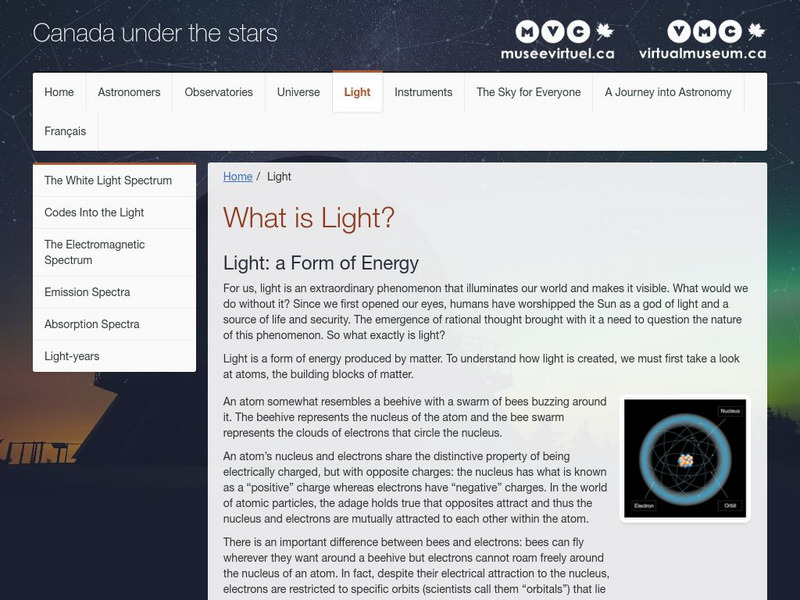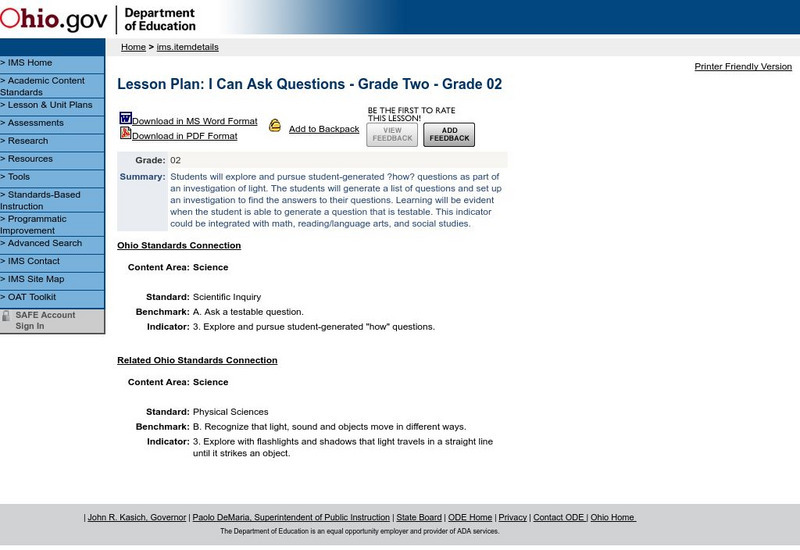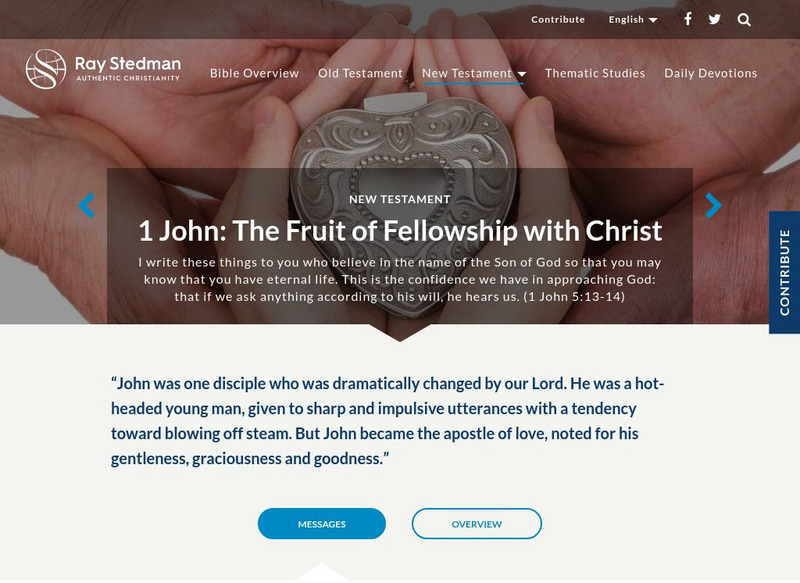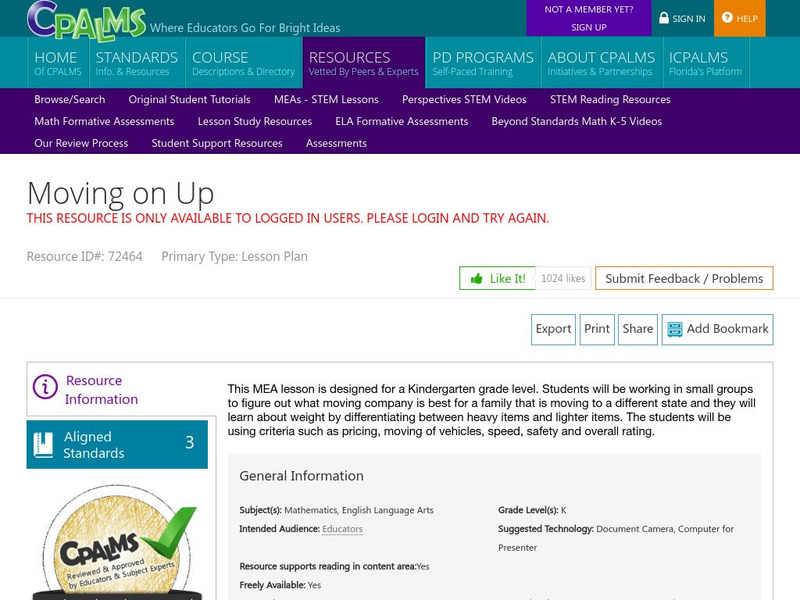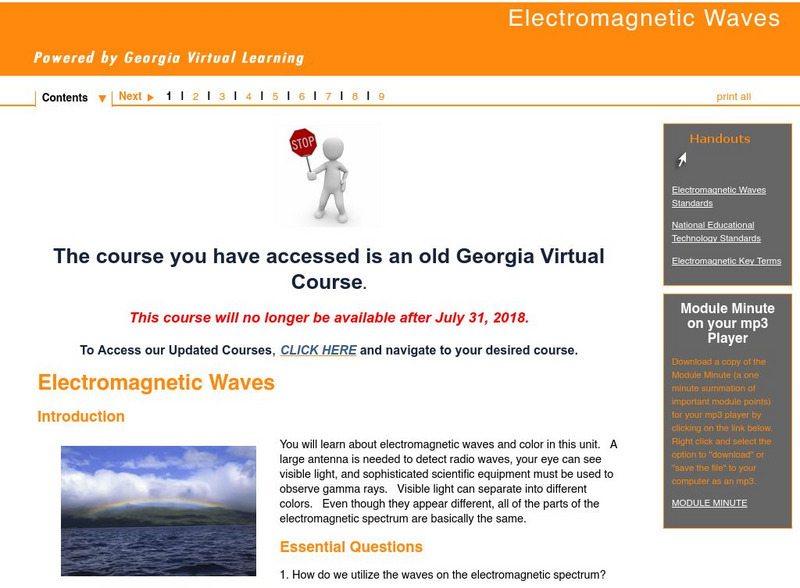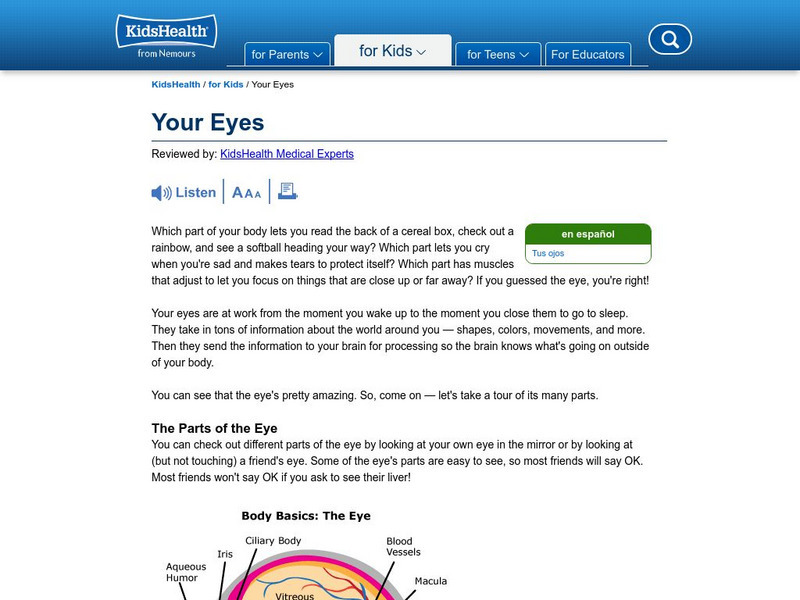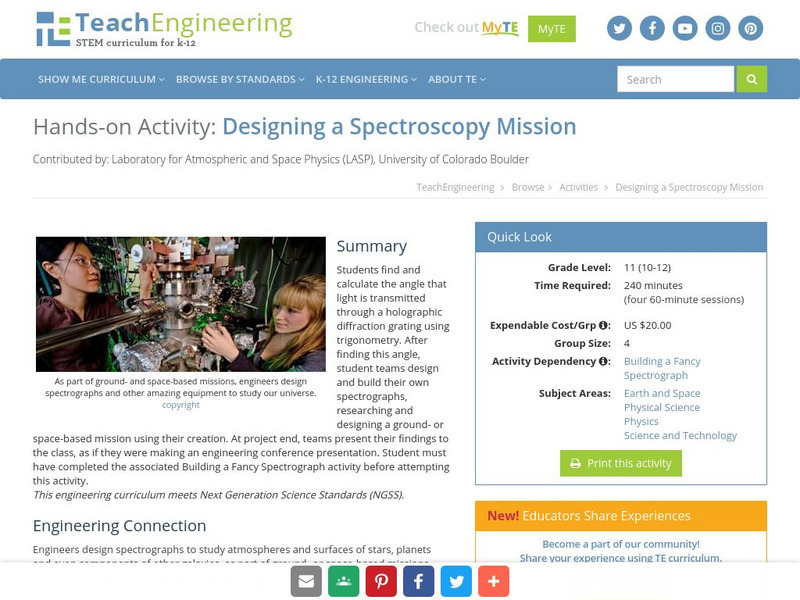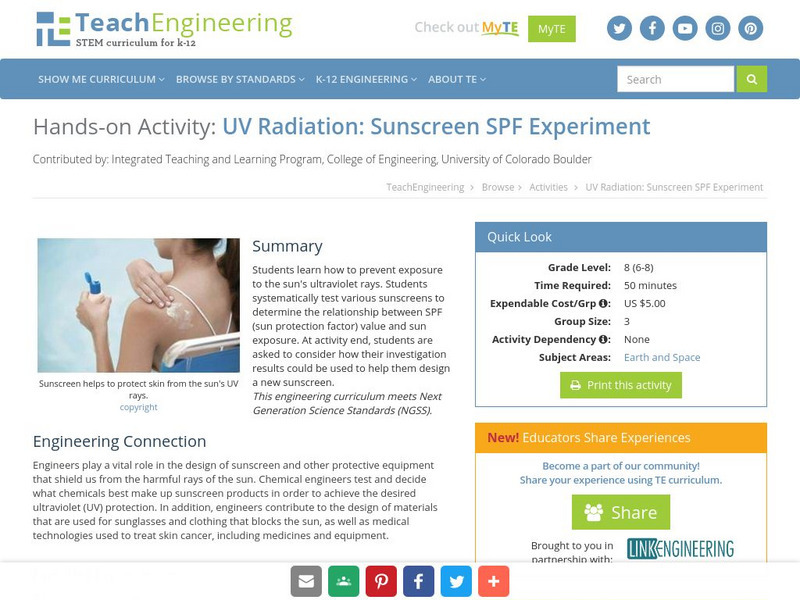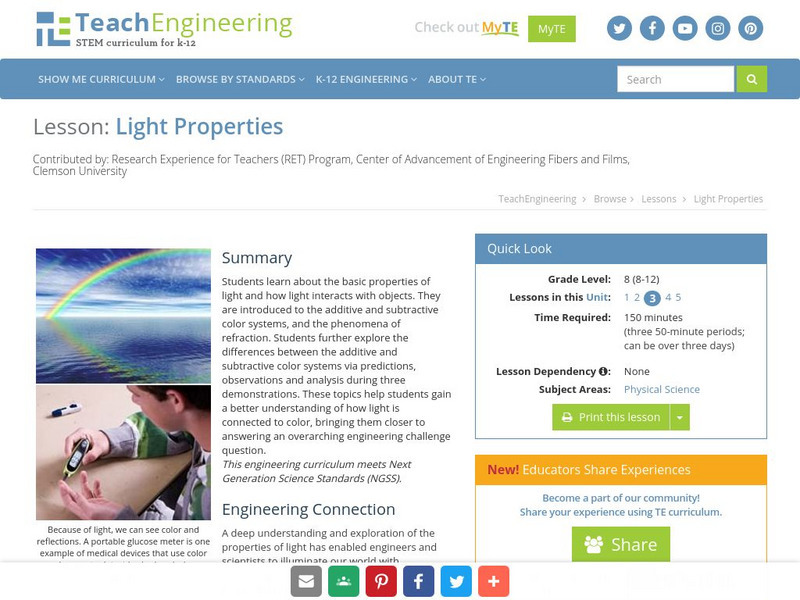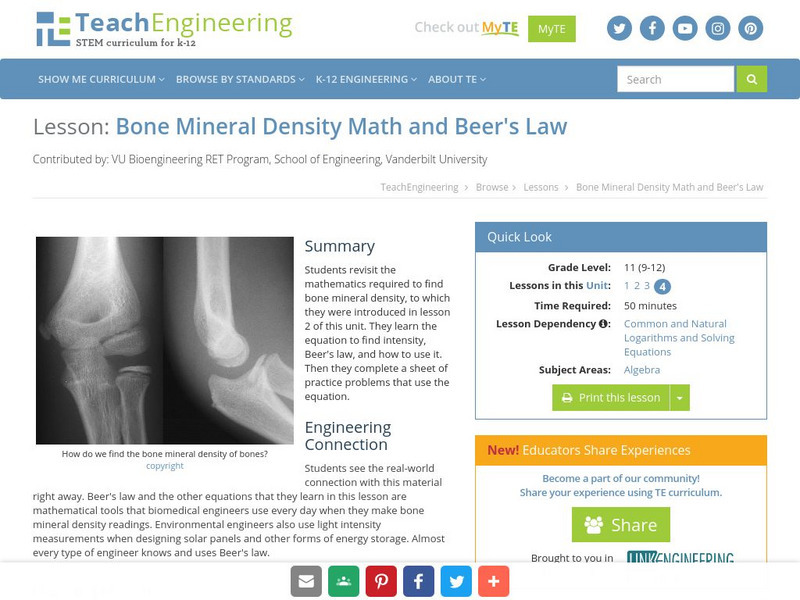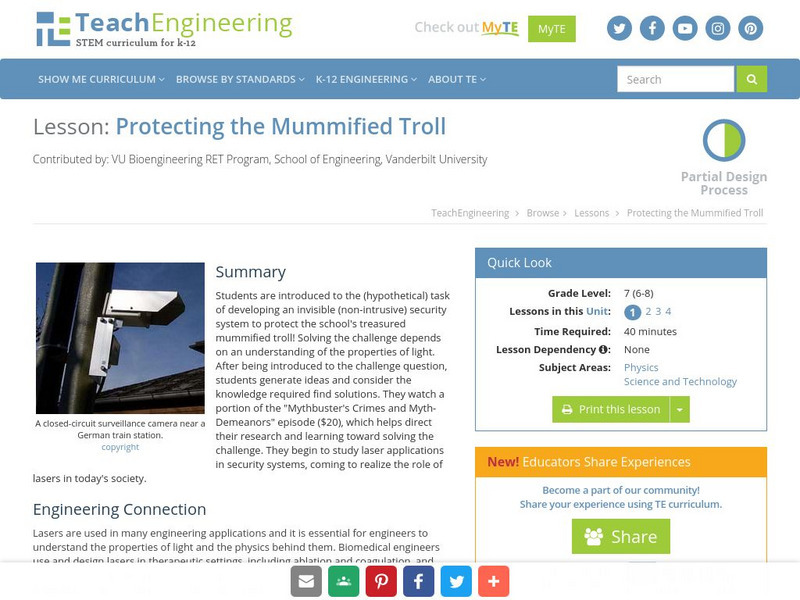Other
Vmc: What Is Light?
What is light? A detailed examination of what creates light, light spectrums, scientists' discoveries, and colored graphics. Appropriate for the older student or adult researcher.
Other
Ohio Dept. Of Education: Lesson Plan: I Can Ask Questions Grade Two
Students will explore sources of light in this instructional activity and generate their own questions for further investigation, then find answers.
Other
A History of Light and Lighting
This comprehensive article describes millions of years worth of the history of light and lighting.
Canada Science and Technology Museum
Canada Science and Technology Museum: Background Information for Light
Light! How do we see? What makes light? Find out everything you need to know through the Q&As on this site.
Other
Ray Stedman: Expository Studies in First John
35 messages on 1 John that are divided into five main themes: "Maintaining Fellowship," "Maintaining Truth," Maintaining Righteousness" "Maintaining Love," and "Maintaining Assurance."
National Geographic
National Geographic: Seeing Is Believing
In this lesson, students investigate the properties of light using simple materials. Includes handout and video resources.
CPALMS
Moving on Up
[Free Registration/Login Required] During this MEA simulation, kindergarten students will be preparing for a move to another state. Students must work in cooperative groups as they determine which moving company will be the best for...
Georgia Department of Education
Ga Virtual Learning: Electromagnetic Waves
Through informational text, interactive activities, practice problems, and virtual simulations, students explore the properties of electromagnetic waves.
NASA
Nasa: The Space Place: Why Is the Sky Blue?
Learn about colors of light by exploring how prisms work. Discover the different colors of the spectrum and how the visible light is what we see.
Curated OER
Kids Health: A Big Look at the Eye
Younger students learn much about the human eye in this article, which is illustrated with a cross-sectional diagram.
University of Colorado
University of Colorado: Ph Et Interactive Simulations: Bending Light
Explore bending of light between two media with different indices of refraction. See how changing from air to water to glass changes the bending angle. Play with prisms of different shapes and make rainbows.
E-learning for Kids
E Learning for Kids: Science: Denmark: How Does Light Help Us See Things?
Isabella and Amalie are in Copenhagen, and they saw a periscope in the water. Join them, and find out what this is all about. This module discusses how to use a periscope, what light sources are, and how light impacts shadows.
TeachEngineering
Teach Engineering: Stations of Light
Student groups rotate through four stations to examine light energy behavior: refraction, magnification, prisms and polarization. They see how a beam of light is refracted (bent) through various transparent mediums. While learning how a...
TeachEngineering
Teach Engineering: Engineering Your Own Spectrograph
Students use simple materials to design an open spectrograph so they can calculate the angle light is bent when it passes through a holographic diffraction grating. A holographic diffraction grating acts like a prism, showing the visual...
TeachEngineering
Teach Engineering: Designing a Spectroscopy Mission
Students find and calculate the angle that light is transmitted through a holographic diffraction grating using trigonometry. After finding this angle, student teams design and build their own spectrographs, researching and designing a...
TeachEngineering
Teach Engineering: It Burns!
In this activity, students learn how to prevent exposure to the Sun's harmful ultraviolet rays. Students will systematically test various sunscreens to determine the relationship between spf (sun protection factor) value and sun...
TeachEngineering
Teach Engineering: Light Intensity Lab
Students complete this Beer's Law activity in class. Students examine the attenuation of various thicknesses of transparencies. From this activity, students will understand that different substances absorb light differently. This can...
TeachEngineering
Teach Engineering: Waves: The Three Color Mystery
Students are presented with a challenge question concerning color blindness and asked to use engineering principles to design devices to help people who are color blind. Using the legacy cycle as a model, this unit is comprised of five...
TeachEngineering
Teach Engineering: Spectroscopy
Students learn how using a spectrograph helps us understand the composition of light sources. Using simple materials and holographic diffraction gratings (available online at a variety of sites, including Edmund Scientifics and the...
TeachEngineering
Teach Engineering: Light Properties
Students learn about the basic properties of light and how light interacts with objects. They are introduced to the additive and subtractive color systems, and the phenomena of refraction. Students further explore the differences between...
TeachEngineering
Teach Engineering: Exploring the Electromagnetic Spectrum
Learners learn the basics of the electromagnetic spectrum and how various types of electromagnetic waves are related in terms of wavelength and energy. In addition, they are introduced to the various types of waves that make up the...
TeachEngineering
Teach Engineering: Pictures Please: Traveling Light
In this instructional activity, students learn that light travels in a straight line from a light source and that ray diagrams help us understand how an image will be created by a lens. In the accompanying activity, students explore the...
TeachEngineering
Teach Engineering: Bone Mineral Density Math and Beer's Law
In this lesson students revisit the mathematics required to find bone mineral density, to which they were introduced in Lesson 2. They will learn the equation to find intensity and how to use it. There is a sheet of practice problems...
TeachEngineering
Teach Engineering: Protecting the Mummified Troll
Learners are introduced to the (hypothetical) task of developing an invisible (non-intrusive) security system to protect the school's treasured mummified troll! Solving the challenge depends on an understanding of the properties of...


